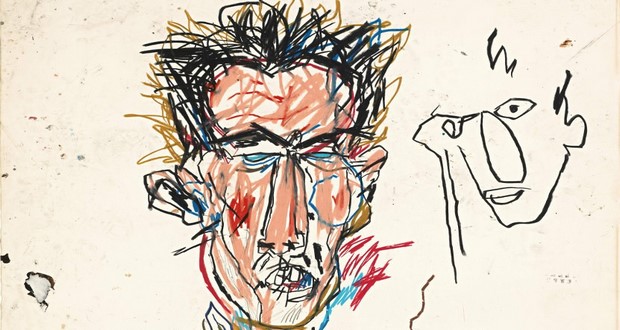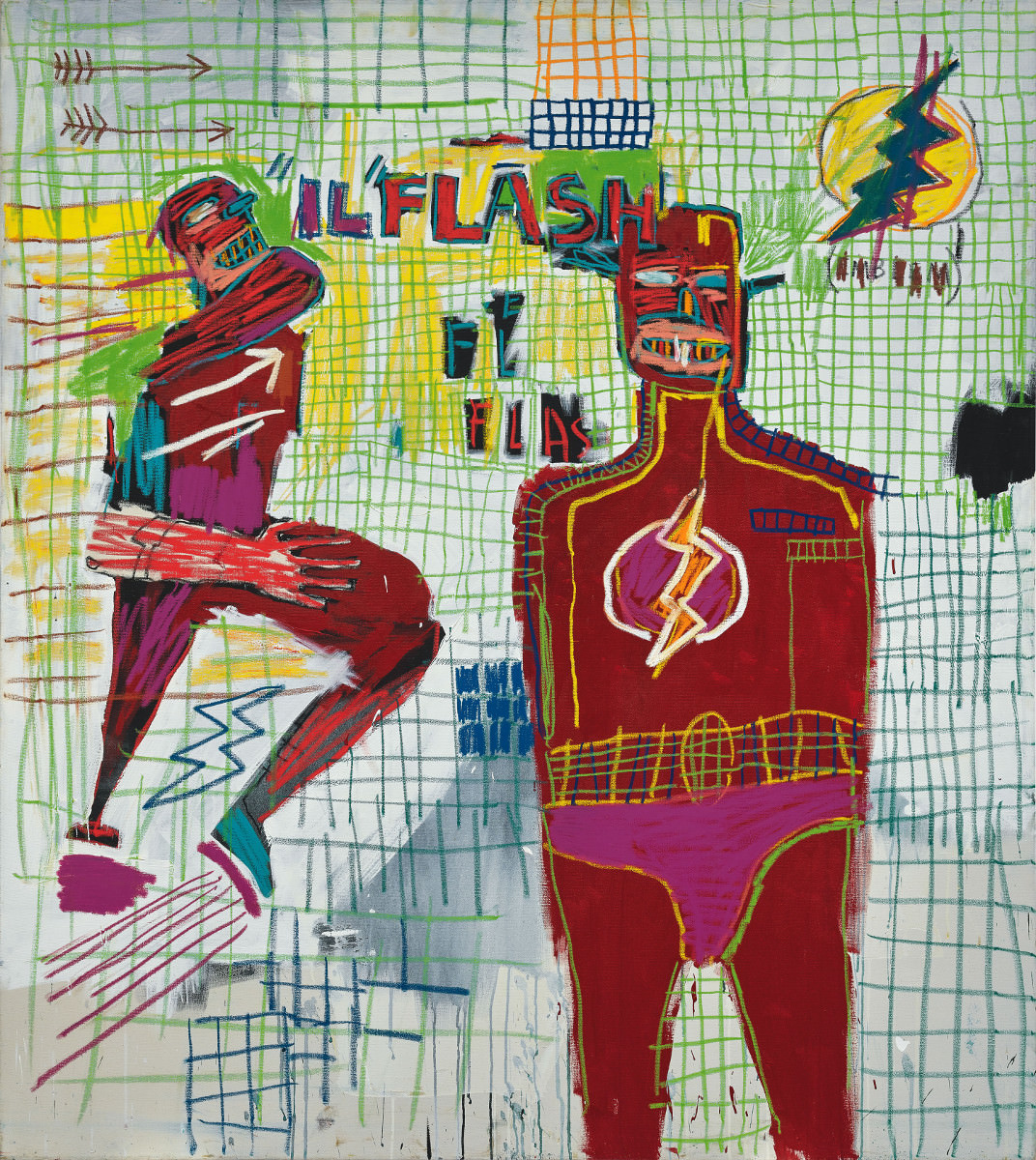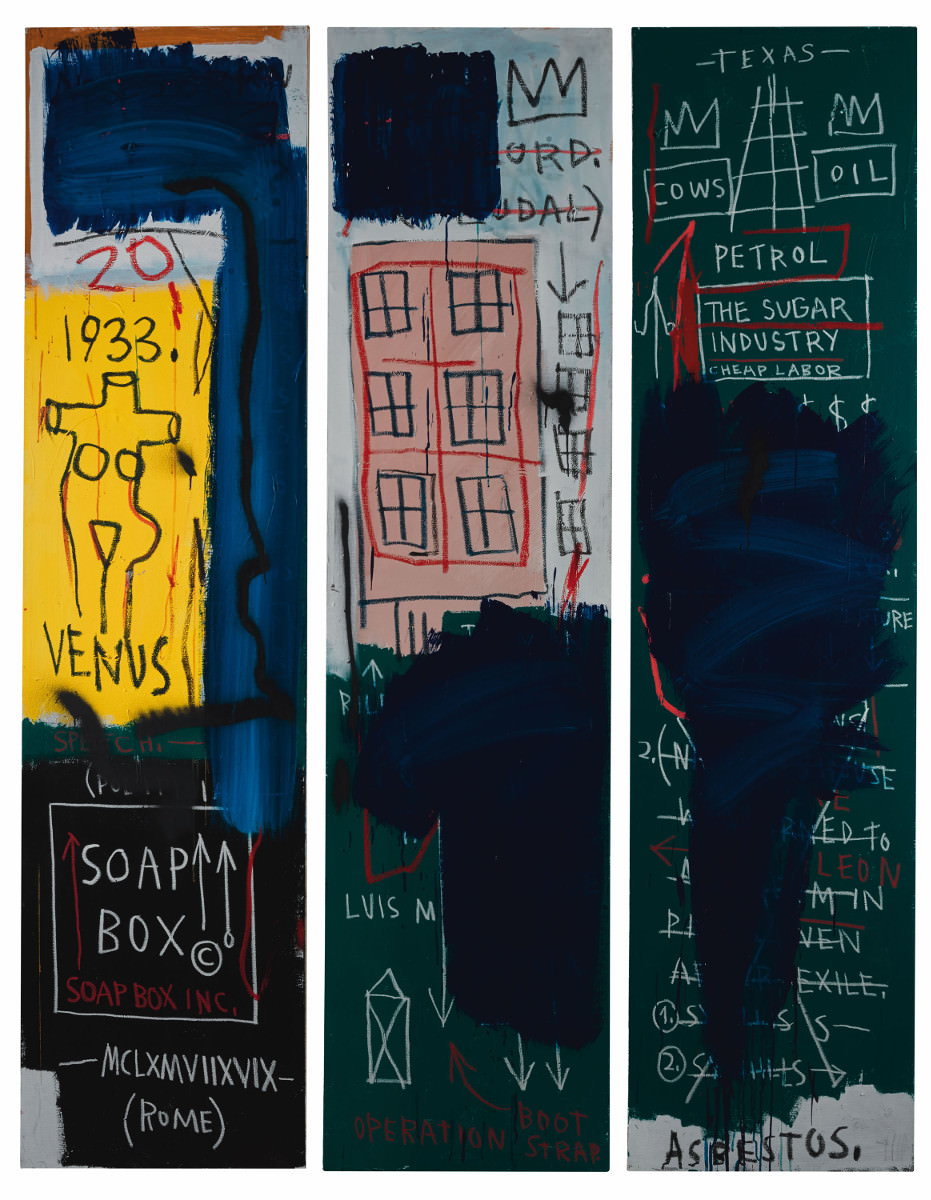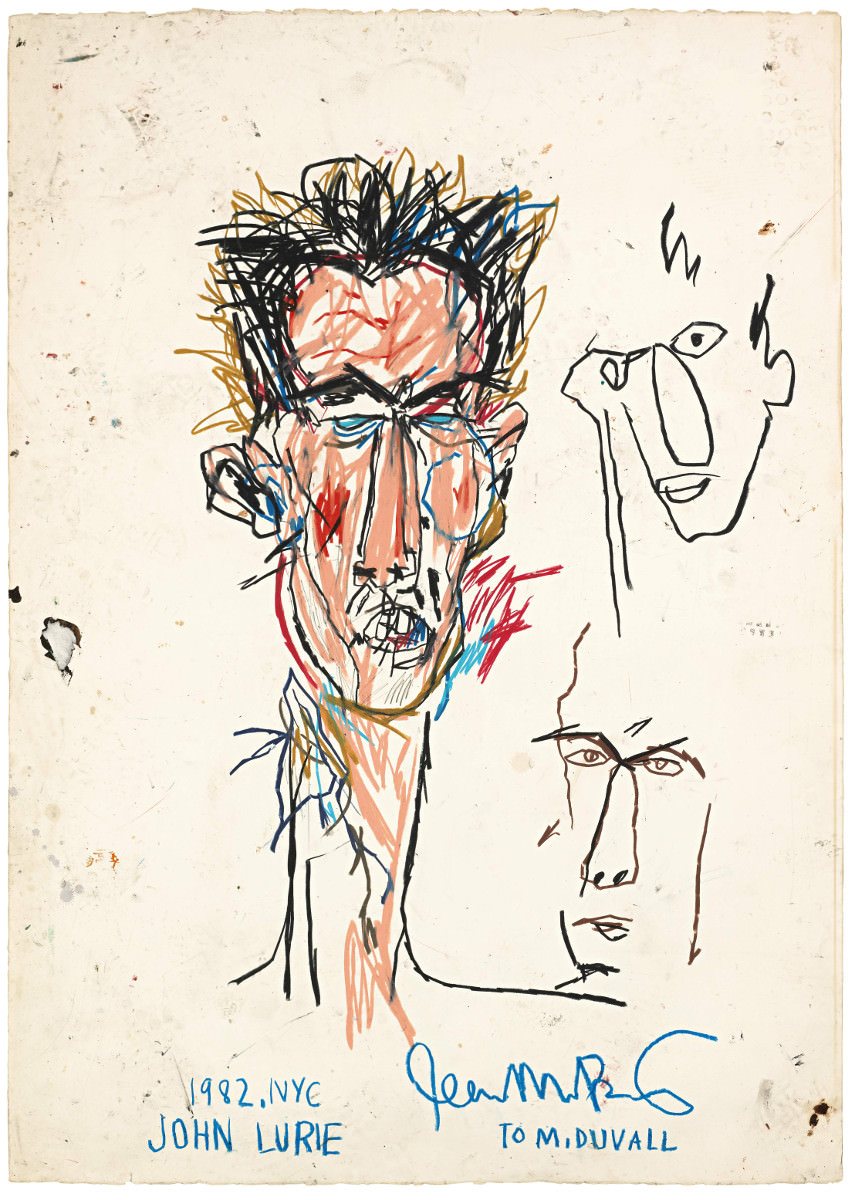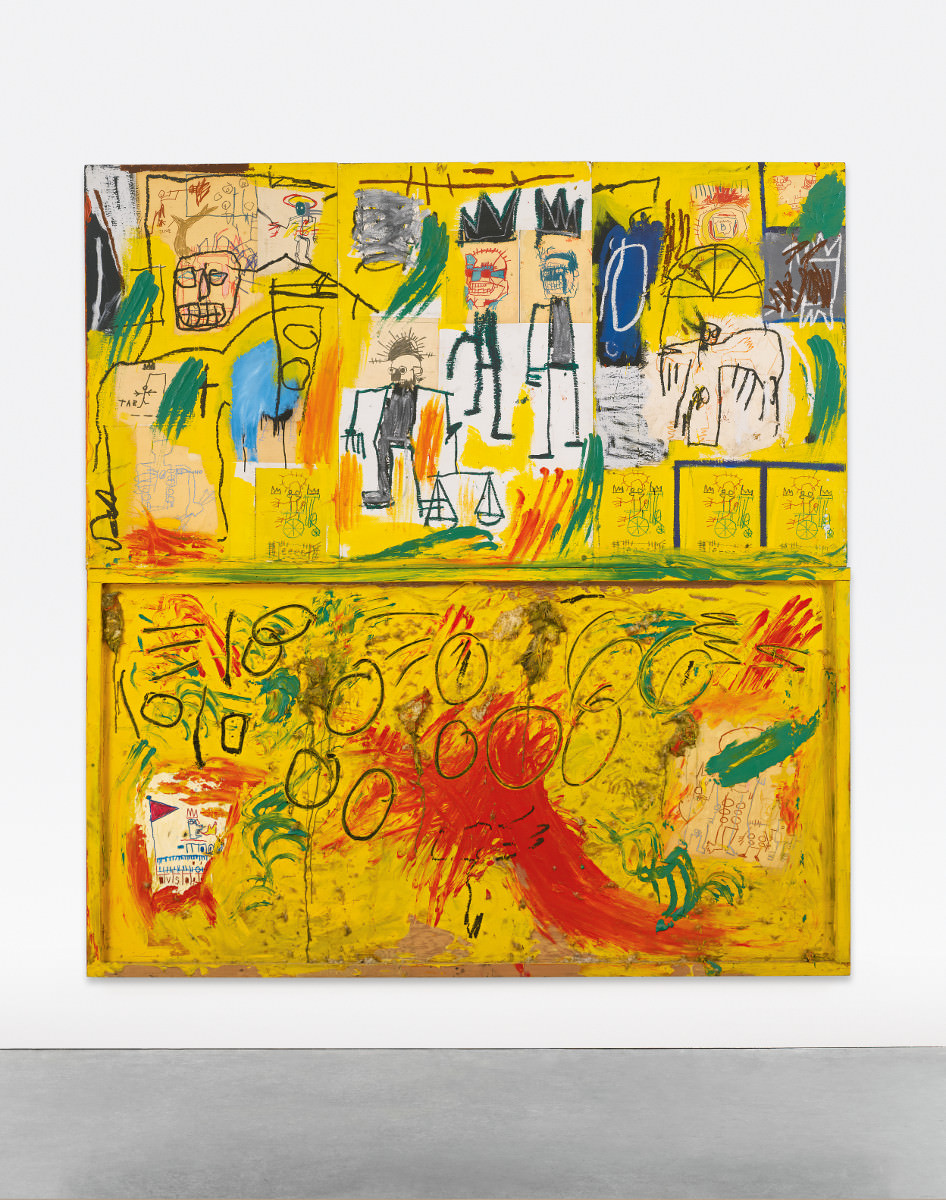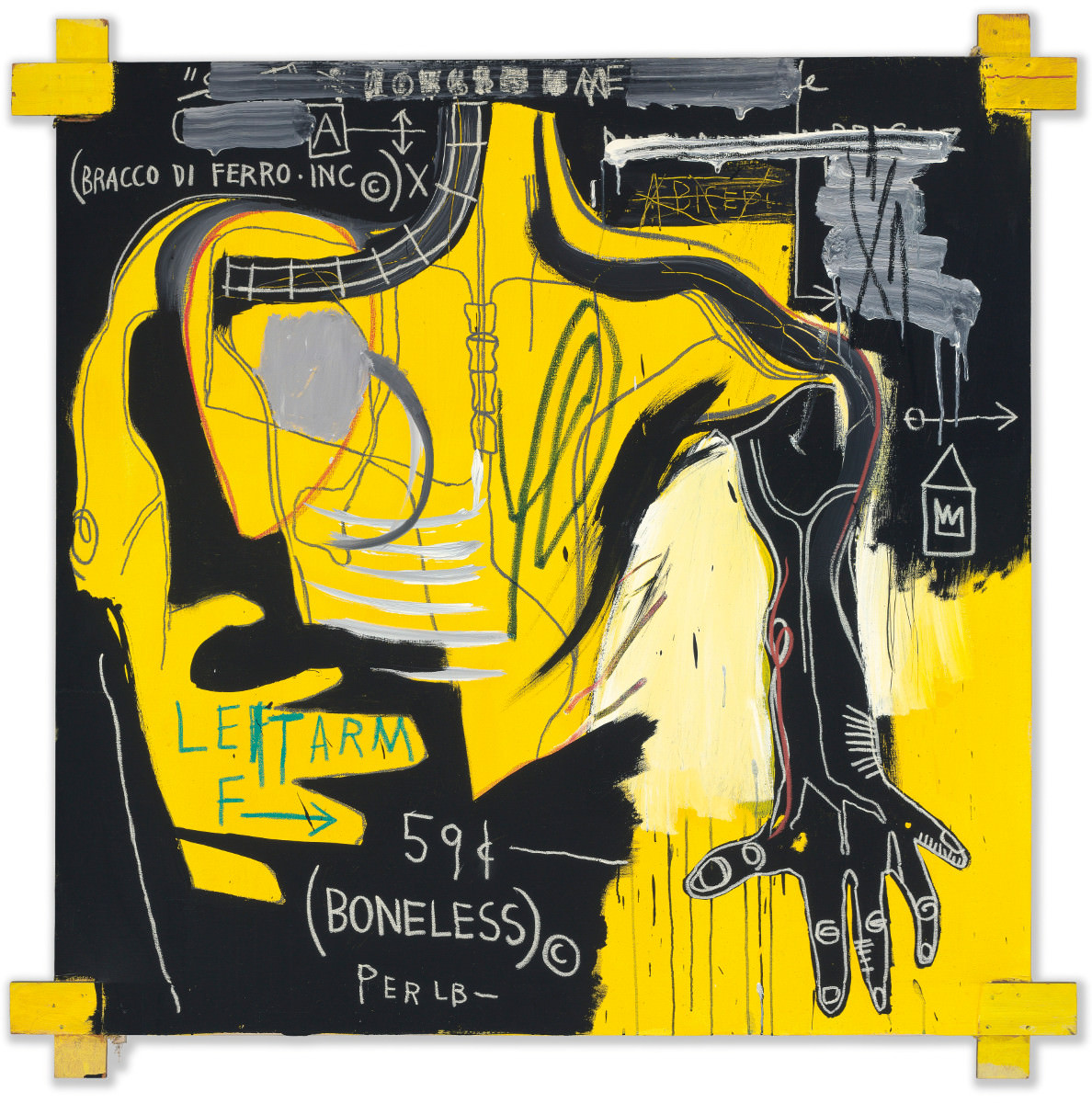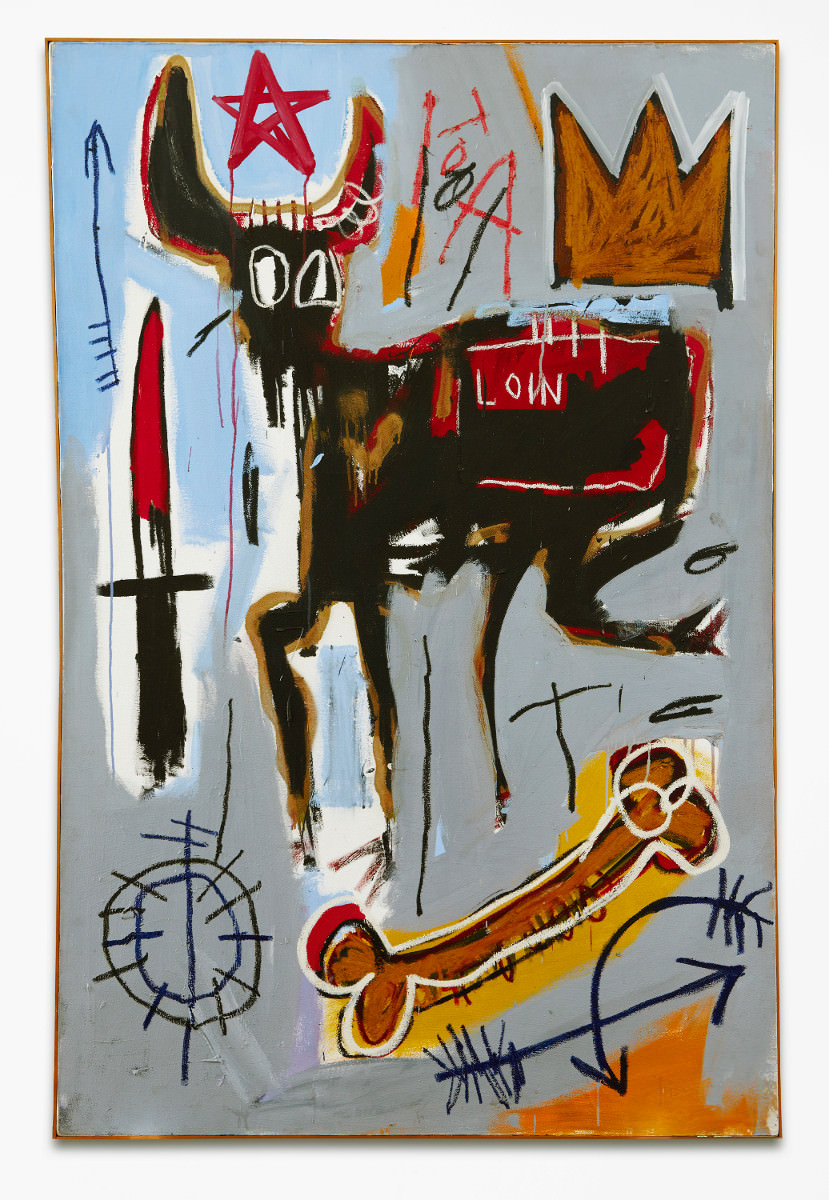You can also listen to this article in the voice of own Plastic Artist Rosângela Vig:

The reality of consciousness, this faculty about which people chatter and are so proud of, is a sign of our imperfect development. Before we become superior, it must fuse with instinct. (WILDE,1994, p.113)
Wilde tells us about the freedom of the spirit. The freedom that Art translated into its codes, in its purest form of presentation, closer to thought, detached from reality and figuration. This trend was strongly manifested in Modern Art and inhabited the works of Jean-Michel Basquiat (1960-1988) 1, one of the most popular artists of the 80. The background was the city; the color was the protagonist in many of his works; and the form was free. The way Basquiat saw the world was recorded in abandoned Manhattan buildings. But his art crossed the barriers of the urban, served as inspiration to various artists, went through galleries and acquired high value in auctions.
Basquiat became known as graffiti artist, in New York City, where he was born and died. Of Puerto Rican descent maternal and paternal, Haitian, The artist was the first child of the upper middle class family. His intelligence, his talent and interest in the Art were visible from an early age. At a young age, Basquiat masterfully reproduced drawings and, at the age of six, was a frequenter at MOMA, Museum of Modern Art. Due to a serious accident when he was seven, he was hospitalized, to keep her son occupied, his mother gave him the book Gray's Anatomy. This, in a way, led him to study human Anatomy and influenced his paintings. As an allusion to the book, the artist even founded in 1979, the band Gray's, which involved movements such as Hip Hop and Rap.
During three years of his adolescence, Basquiat lived in Puerto Rico, due to the separation of the parents and returned to New York when he was 17 years. He did not adapt to the schools where he passed, dropped out of school and decided to live with friends. He painted and sold t-shirts on the streets of the city, where he had spent living. Abandoned buildings of Manhattan, his first graffiti, with his friend Al Diaz, received the signature SAMO (short for Same Old Shit), meaning "always the same shit". The graffiti expanded into walls and into the New York subway. Basquiat became known in the city, was invited to a television program and to a film.
His primitivist and neo-expressionist style caught the eye of critics. In 1980 participated in the exhibition The Times Square Show. The following year, critic Rene Ricard (1946-2014) published an article commenting on the artist, that led Basquiat to be known and exhibited internationally and in New York, together with names like Keith Haring (1958-1990) and Barbara Kruger (1945-). He was honored by great Art curators and related to well-known artists of the neo-expressionist movement. He had a relationship with the still unknown singer Madonna (1958-), in addition to a great friendship with Andy Warhol (1928-1987) 2, who helped him a lot with housing, publicity and work material. He even stated in the graffiti, SAMO died, when he left the Street Art and started to paint canvases. His work acquired meteoric projection and the friendship with Warhol coincided with the most creative period of the artist's life. He exhibited in museums of New York and in several countries, but the death of his friend, in 1987 acted negatively in its production. Basquiat no longer met the demands of criticism and ceased to be a celebrity. Loneliness and overuse of drugs drove him to death in 1988. The artist's short life turned into a movie of 1996, that had David Bowie, as Andy Warhol and Jeffrey Wright as Basquiat.
Urban and expressiveness are the strongest marks of Basquiat's works. The use of words and letters in his paintings reveals his connection with street graffiti and the variety of subjects and books he read, such as, Gray's Anatomy of his childhood. Unlike Warhol's Pop Art, Basquiat's Art critically criticized the system, power, class conflicts and racism, despite the presence of policemen in his works. There are figures of prophets, athletes, warriors, myths, musicians (Fig. 4) and heroes (Fig. 1).
In figure 1, the hero appears in two positions, head on, in a nearest plane; and side, in a further plan, suggesting speed. On the left side of the painting, he is in full motion, with one leg behind, which accentuates the idea of movement. The other leg, forward, suggests a broad step, with the knee, calf and thigh outlined, revealing that the artist knew notions of Anatomy. The allusion to the iconic character of comics is due to the red suit, the belt with the ray designed and the mask. Around it, the city has buildings, with doors and windows.
The artist brought up social and racial issues, using the black as the protagonist, in many of his paintings. The artist himself, was Black, and succeeded in a universe that was predominantly white at that time. The convulsion of forms is expressive, visceral, joins the uncontained desire to expose the worst side of society, the urban decadent and averse, with which he himself lived. Primitivism makes clear the connection with graffiti and with the fact that, to Art, has the role of exposing thought, not of recording reality. Of his career, there are works that are currently being played in the art world.
The reality and the image
The skyscraper over in the clean air washed by the rain
And descends reflected in the mud puddle of the patio,
Between reality and image, on the dry ground that separates them,
Four doves stroll.
(BANDEIRA, 2008, p.118)
About the Exhibition
This year, a major retrospective of the work of Jean-Michel Basquiat will circulate this year throughout Brazil, with free admission to the public. With more than 80 parts, between frames, drawings, engravings and painted plates, the incredible collection of countless masterpieces by the artist can be found at Centro Cultural Banco do Brasil (CCBB), in São Paulo, in 25 January, the anniversary of the City. The works will be on display in the city of São Paulo until 7 April, then, to be presented in Brasília (from 21 April, anniversary of the federal capital, the July 1), Belo Horizonte (16 from July to 26 September) and Rio de Janeiro (12 October to 8 January 2019). The coming of this highly qualified collection to Brazil, in four capitals, took about two years of negotiations.
The Basquiat’s retrospective was conceived with works of the Mugrabi family, owner of the largest collections of Basquiat and also of Andy Warhol. The pieces were played by many countries, among them South Korea, Japan and Russia. The incredible collection comes to the country due to a joint action of Banco do Brasil and the production company Art Unlimited, sponsored by BB SEGURIDADE, BRASILCAP and SEGURADOR BANCO DO BRASIL AND MAPFRE GROUP. The curator is Pieter Tjabbes. "The initiative to present the largest retrospective of Basquiat's work in Latin America, in four Brazilian capitals, over a year, with free tickets, reinforces Banco do Brasil's commitment to training the public for the visual Arts, Culture and the value of diversity", says Alexandre Alves de Souza, Marketing Director at Banco do Brasil. Company that concentrates the insurance business, foresight, capitalization and dental plans of the Banco do Brasil, BB SAFETY also reinforces that "the sponsorship of the exhibition strengthens the position as a company that promotes the democratization of culture in the country", as explains its director, Sergio Augusto Kurovski. "Sponsorship is a way to give society the experience of accessing such important works at the Banco do Brasil Cultural Centers.".
1 Website – Biography:
www.basquiat.com/artist.htm
2 Andy Warhol and Jean-Michel Basquiat friendship – Philos TV:
www.youtube.com/watch?v=nkMWow08a60
http://www.youtube.com/watch?v=nkMWow08a60
.
Sign up to receive Event News
and the Universe of Arts first!
References:
- BANDEIRA, Manuel. Bandeira de Bolso. Porto Alegre: L&PM Pocket, 2008.
- FARTHING, Stephen. All about art. Rio de Janeiro: Editora Sextante, 2011.
- RINK, Anita. Graffiti: Urban Intervention and Art. Curitiba: Editora e Livraria Appris, 2015.
- WILDE, Oscar. The Decay of Lying and other trials. Rio de Janeiro: Imago Editora Ltda., 1994.
The figures:
Fig. 1 – Flash in Naples | 1983 | Acrylic, oil and oilstick on canvas | 168 x 153 cm | © The Estate of Jean-Michel Basquiat. Licensed by Artestar, New York.
Fig. 2 – Untitled | 1983 | Acrylic, oil and oilstick on canvas | 244 x 181 cm | © The Estate of Jean-Michel Basquiat. Licensed by Artestar, New York.
Fig. 3 – Brother´s Sausage | 1983 | Acrylic, oilstick and paper collage on canvas | 122 x 476 cm | © The Estate of Jean-Michel Basquiat. Licensed by Artestar, New York.
Fig. 4 – Jean-Michel Basquiat, John Lurie, 1982 oil stick on paper, 168,6 x 76,5 cm. © The Estate of Jean-Michel Basquiat. Licensed by Artestar, New York.
Fig. 5 – Jean-Michel Basquiat, Untitled (Yellow Tar and Feathers), 1982, Acrylic, oilstick, crayon, paper collage and feathers on joined wood panels, 245,11 x 229,24 cm. © The Estate of Jean-Michel Basquiat. Licensed by Artestar, New York.
Fig. 6 – Jean-Michel Basquiat, Untitled (Bracco di Ferro), 1983, Acrylic and oilstick on canvas with wood supports, 182,9 × 182,9 cm. © The Estate of Jean-Michel Basquiat. Licensed by Artestar, New York.
Fig. 7 – Jean-Michel Basquiat, Loin, 1982, acrylic, colored oil sticks and pastel on canvas, 182,88 x 121,92 cm. © The Estate of Jean-Michel Basquiat. Licensed by Artestar, New York.
ROSÂNGELA VIG
Sorocaba – São Paulo
Facebook Profile | Facebook Fan Page | Website
Columnist at Website Obras de Arte
E-mail: [email protected]

